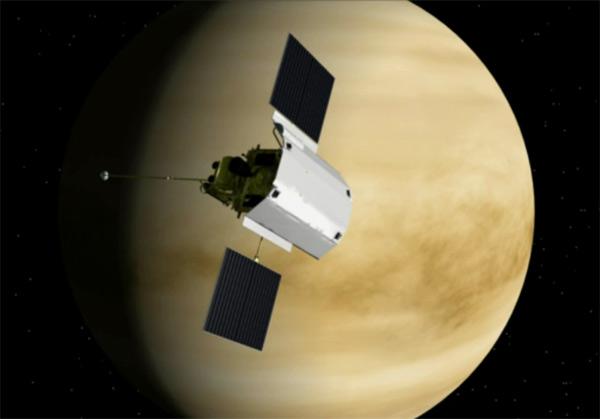MESSENGER spacecraft unfolds some decades-old mysteries of Mercury
 Washington, Sept 30 : After six months of orbiting Mercury, NASA's MESSENGER spacecraft is providing surprising new information on the planet.
Washington, Sept 30 : After six months of orbiting Mercury, NASA's MESSENGER spacecraft is providing surprising new information on the planet.
New close-up images and data provided by the spacecraft indicate Mercury, the tiny planet closest to the Sun, has a lopsided magnetic field, much more sulfur than expected and strange "hollows" across its surface that may hint at present-day geologic activity.
The findings are likely to force scientists reconsider many ideas about the nature and formation of the solar system's innermost planet.
For decades, scientists had puzzled over whether Mercury had volcanic deposits on its surface.
Now, the new data has revealed that the north polar region of the planet is surrounded by huge expanses of volcanic plains, which covers more than 6 percent of the total surface area of Mercury.
It also reveals substantially higher abundances of sulfur and potassium than previously predicted. Both elements vaporize at relatively low temperatures, and their abundances thus rule out several popular scenarios in which Mercury experienced extreme high-temperature events early in its history.
"Theorists need to go back to the drawing board on Mercury's formation," said lead author of one of the papers, Carnegie's Larry Nittler.
"Most previous ideas about Mercury's chemistry are inconsistent with what we have actually measured on the planet's surface," he said.
Another lead author, James Head from the Brown University, said that the deposits appear typical of flood lavas, like those found in the few-million-year-old Columbia River Basalt Group on Earth.
Scientists have also discovered vents, measuring up to 25 km in length, that appear to be the source of some of the tremendous volumes of very hot lava that have rushed out over the surface of Mercury and eroded the substrate, carving valleys and creating teardrop-shaped ridges in the underlying terrain.
They also discovered an unexpected class of landform on Mercury and suggest that a previously unrecognized geological process is responsible for its formation.
The data indicated that Mercury's magnetic equator is also well to the north of the planet's geographic equator. The best-fitting internal dipole magnetic field is located about 480 km (298 miles), northward of the planet's center.
The researchers found that sodium is the most important plasma ion contributed by the planet to the magnetosphere.
The spacecraft also detected helium ions throughout the entire volume of Mercury's magnetosphere.
The findings are published in seven papers in a special section of the September 30, 2011, issue of Science. (ANI)